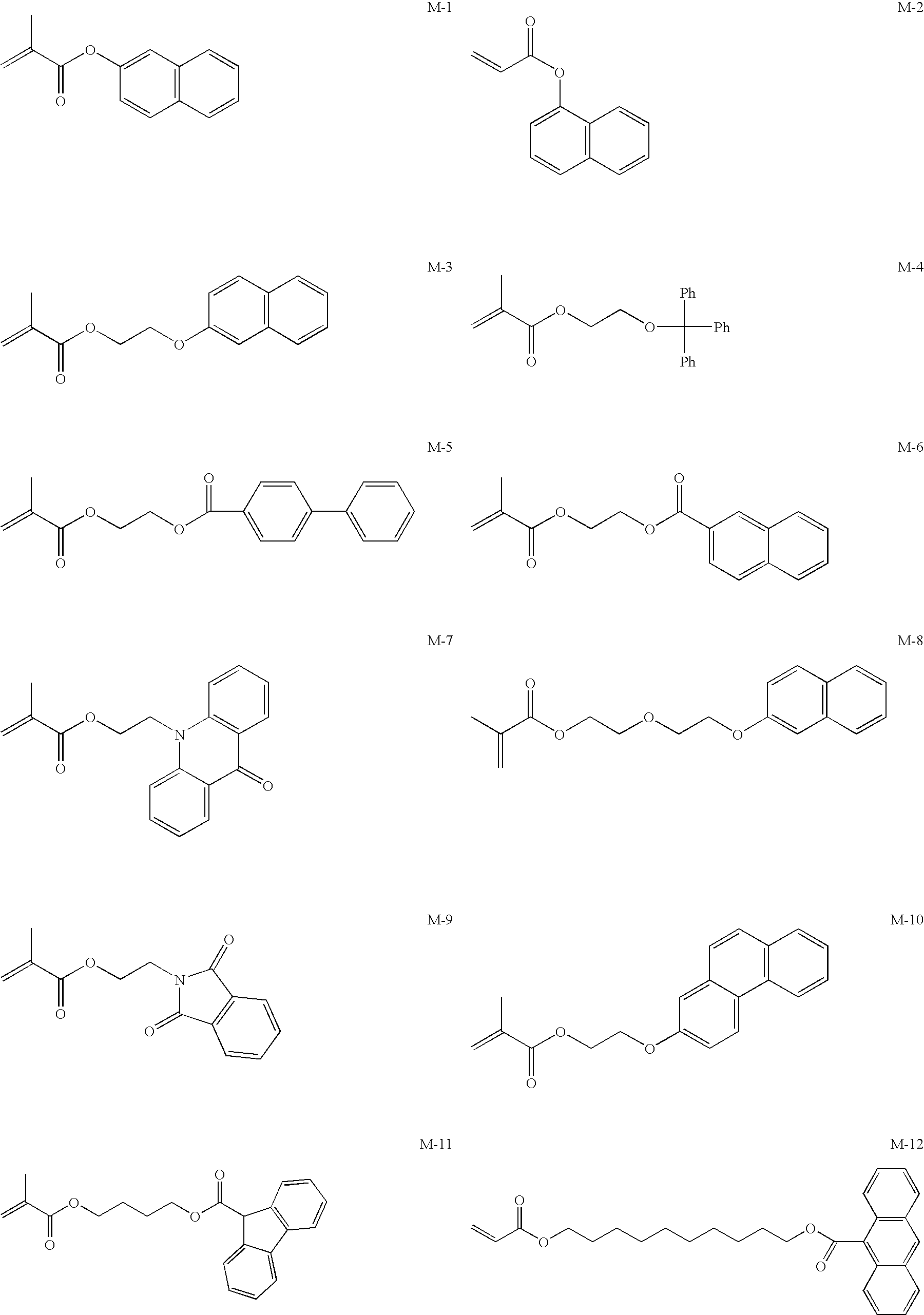Image forming method
a technology of image forming and forming tube, which is applied in the direction of printing, coating, and inks, can solve the problems that the inks employed in the method cannot be regarded as providing sufficient dispersion stability, and achieve excellent dispersion stability and good rub resistan
- Summary
- Abstract
- Description
- Claims
- Application Information
AI Technical Summary
Benefits of technology
Problems solved by technology
Method used
Image
Examples
example 1
Preparation of Ink
Synthesis of Polymer Dispersant P-1
[0295]A polymer dispersant P-1 was synthesized according to the following scheme.
[0296]Methyl ethyl ketone (88 g) was placed in a 1000 ml three-neck flask equipped with a stirrer and a condenser tube, and heated to 72° C. under a nitrogen atmosphere. Separately, 0.85 g of dimethyl-2,2′-azobisisobutyrate, 60 g of benzyl methacrylate, 10 g of methacrylic acid, and 30 g of methyl methacrylate were dissolved in 50 g of methyl ethyl ketone to form a solution. The solution is added dropwise to the liquid in the flask over three hours. After the dropwise addition was completed, the reaction was further continued for one hour. Then, a solution obtained by dissolving 0.42 g of dimethyl 2,2′-azobisisobutyrate in 2 g of methyl ethyl ketone was added to the reaction solution, and the reaction solution was heated to 78° C. and heated at this temperature for 4 hours. The obtained reaction solution was reprecipitated twice with an excess quantit...
example 2
[0349]An ink composition and a treatment liquid of Example 2 were prepared in the similar manner as those in Example 1, except that the amount and the kind of the solvent used for preparation of the ink composition were changed to those shown in Table 2, and the cationic polymer used for preparation of the treatment liquid was changed to citric acid (an acidic compound).
[0350]Image formation and evaluations were performed in the similar manner as Example 1, except that the thus-prepared ink composition and treatment liquid were employed. The results thereof are shown in Table 2.
examples 3 and 4
[0351]Ink compositions of Example 3 and 4 were respectively prepared in the similar manner as those in Example 1, except that the amount and the kind of the solvent used for preparation of the ink composition were changed to those shown in Table 2.
[0352]Image formation and evaluations were performed in the similar manner as Example 1, except that each of the thus-prepared ink compositions was employed. The results thereof are shown in Table 2.
PUM
| Property | Measurement | Unit |
|---|---|---|
| boiling temperature | aaaaa | aaaaa |
| boiling temperature | aaaaa | aaaaa |
| boiling temperature | aaaaa | aaaaa |
Abstract
Description
Claims
Application Information
 Login to View More
Login to View More - R&D
- Intellectual Property
- Life Sciences
- Materials
- Tech Scout
- Unparalleled Data Quality
- Higher Quality Content
- 60% Fewer Hallucinations
Browse by: Latest US Patents, China's latest patents, Technical Efficacy Thesaurus, Application Domain, Technology Topic, Popular Technical Reports.
© 2025 PatSnap. All rights reserved.Legal|Privacy policy|Modern Slavery Act Transparency Statement|Sitemap|About US| Contact US: help@patsnap.com



